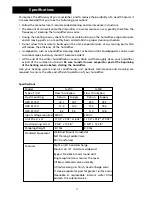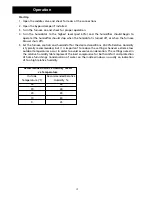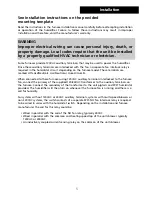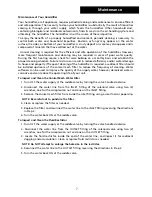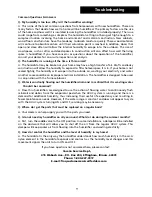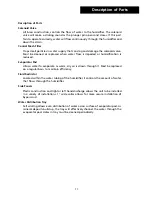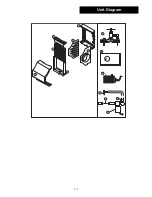
3
Capacity Selection Guide
Operation
This humidifier operates using the evaporative principle in a quiet, efficient and automatic
manner. It is constructed of the highest quality, engineering grade materials to assure superior
performance and durability. This humidifier is controlled so that it operates only when the
furnace blower is operating and the humidistat, which is installed on the cold air return duct or
in your living area, calls for humidity.
When there is a call for humidity, water flows into the distribution tray and trickles down
through the evaporator pad. Warm, dry air is drawn through the evaporator pad, where it
absorbs moisture and is returned to the duct, and is circulated throughout the house. There is
no standing water in this humidifier, thus reducing maintenance and handling. The drain,
located at the bottom of the unit, allows unused water to flush from the humidifier. The drain
water carries away mineral deposits that have been left behind after the evaporation process. A
fluid restrictor located in the evaporator pad supply tubing controls the amount of water
flowing through the humidifier.
Do NOT attempt to control the flow of water by using the saddle valve. It is designed to be
either fully open or closed.
A pad in the distribution tray distributes water evenly between the openings. The distribution
tray should be inspected annually and any plugged holes cleaned (more frequently in areas of
poor water quality).
Sq. Footage of
Home
1000
1500
2000
2500
3000
4000
Tight Home
(GPD)
0.5
3.0
5.0
7.5
10.0
14.5
Average Home
(GPD)
5.0
10.0
14.0
19.0
23.5
33.0
Loose Home
(GPD)
10.0
16.5
24.0
30.5
37.5
51.5
Air Tightness of Home
The above calculations are for reference only and are based on the following
• Inside temperature 70° F/35% Relative Humidity
• Outside Temp 20° F /70% Relative Humidity
• 8 foot ceiling height
• Internal moisture gain of one pound per hour
• Furnace on-time of 70%
This chart uses A.R.I. standard designations:
A “Tight Home” is assumed to be well insulated with vapor barriers, tight storm windows and
doors, and a dampered fireplace. Air exchange rate of .5 changes per hour.
An “Average Home” is insulated and has a dampered fire place, but there are no vapor barriers,
storm doors, or storm windows. Air exchange rate of 1.0 change per hour.
A “Loose Home” is generally one constructed before 1930, has little or no insulation, no storm
doors, storm windows, weather stripping or vapor barriers, and often no effective dampering of
fireplaces. Air exchange rate is as high as 1.5 changes per hour.




